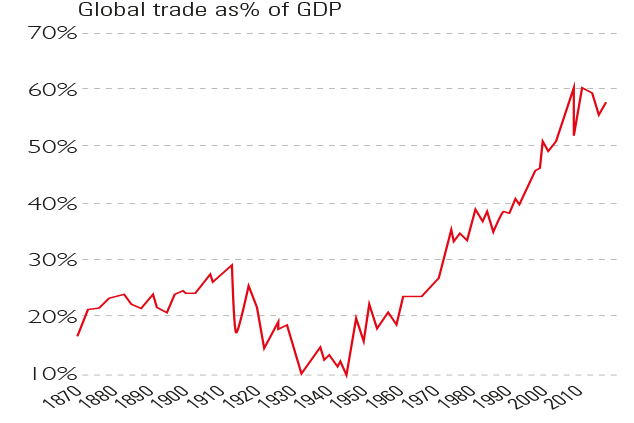
Global trade (exports plus imports) averaged less than 10% of GDP before the 1800s, says Deutsche Bank. It then tripled by 1914, thanks to advances in communication and production triggered by the industrial revolution. The two major wars of the 20th century caused a hiatus, but the advent of shipping containers, along with falling tariffs due to successive rounds of multilateral trade talks, underpinned further progress after 1945. Today, however, trade is struggling to recover from the massive recession caused by the financial crisis. A multi-decade downtrend in US protectionism is reversing under Donald Trump, with the average tariff for all imports ticking up in recent years for the first time since the 1950s.
Viewpoint
”Hats off to Hargreaves Lansdown. In a year that has seen serious financial losses for 290,000 of its clients [thanks to the Woodford debacle], you might think there’d be some backlash. [Yet the latest] trading statement reveals that instead new clients keep rocking up… and that assets under administration passed £100bn. That’s an astonishing amount for a firm that [simply] provides a platform from which clients can pick savings schemes… nothing particularly complicated is being achieved here. The evidence for that comes in extraordinary profit margins of nearly 64%… In other sectors… a profit margin of [even] 6.4% would be a cause of… [worry] that government authorities were poised to intervene on competition grounds… perhaps it is time [brokers] faced a probe… clients are plainly happy with the service… it is tempting to think that is because they aren’t doing the maths.”
Simon English, Evening Standard